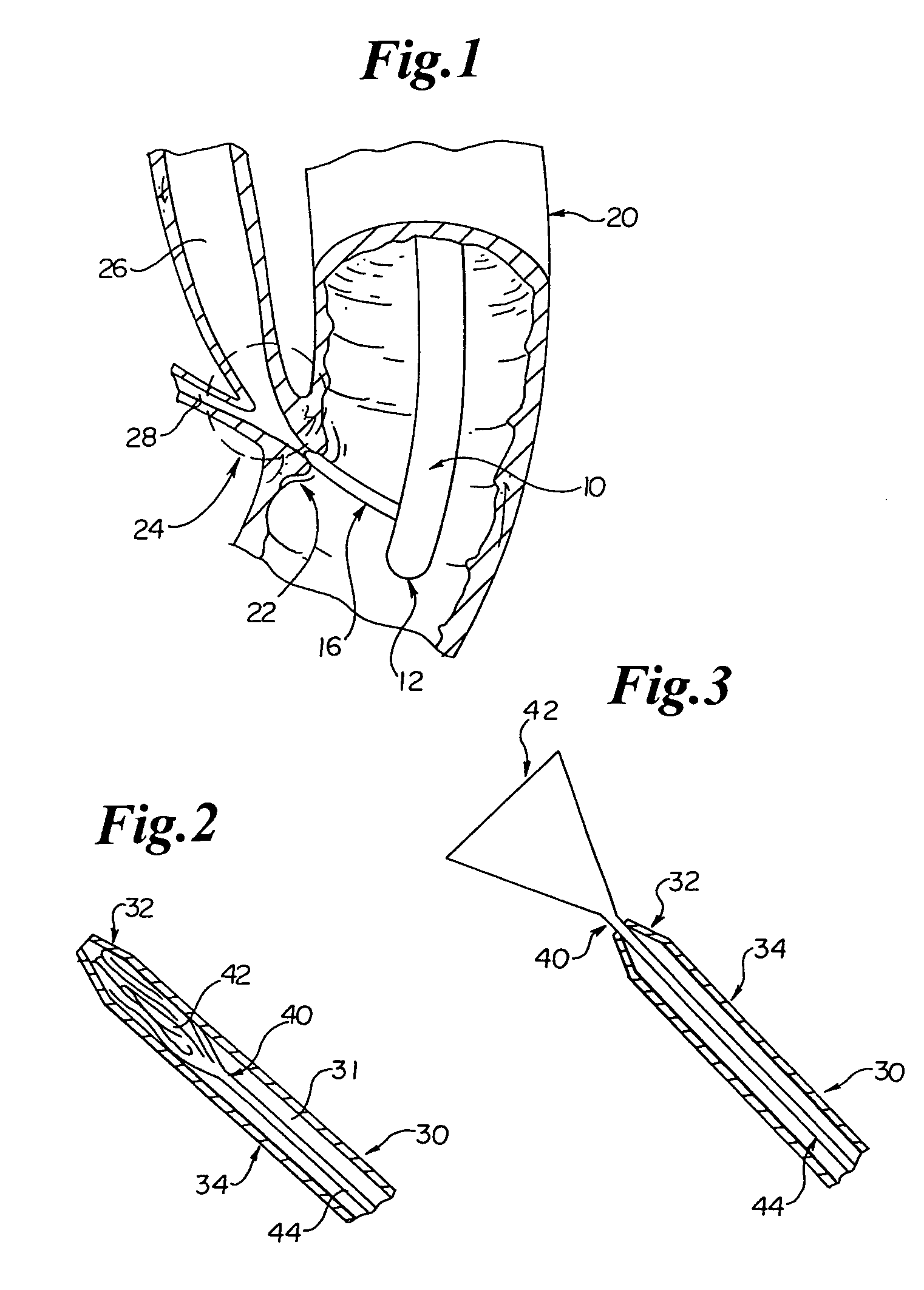Cone tip biliary catheter and method of use
a biliary catheter and cone tip technology, applied in the field of biliary catheters, can solve the problems of denying access to either of the pancreatico-biliary ducts, limited endoscopes, and little success,
- Summary
- Abstract
- Description
- Claims
- Application Information
AI Technical Summary
Benefits of technology
Problems solved by technology
Method used
Image
Examples
Embodiment Construction
[0030]The following detailed description should be read with reference to the drawings, in which like elements in different drawings are numbered identically. The drawings, which are not necessarily to scale, depict selected embodiments and are not intended to limit the scope of the invention. Examples of constructions, materials, dimensions, and manufacturing processes are provided for selected elements. Those skilled in the art will recognize that many of the examples provided have suitable alternatives that may be utilized.
[0031]Refer now to the drawings, wherein FIG. 1 shows the advancement of endoscope 10 through the alimentary canal 20 to a position adjacent the papilla of Vater 22. Endoscope 10 provides the initial access and direct visualization of the general area of treatment. The thin, flexible endoscope 10 has a proximal end (not shown), a distal end 12, and at least one lumen extending the length thereof.
[0032]The proximal end possesses a hub assembly allowing additiona...
PUM
 Login to View More
Login to View More Abstract
Description
Claims
Application Information
 Login to View More
Login to View More - R&D
- Intellectual Property
- Life Sciences
- Materials
- Tech Scout
- Unparalleled Data Quality
- Higher Quality Content
- 60% Fewer Hallucinations
Browse by: Latest US Patents, China's latest patents, Technical Efficacy Thesaurus, Application Domain, Technology Topic, Popular Technical Reports.
© 2025 PatSnap. All rights reserved.Legal|Privacy policy|Modern Slavery Act Transparency Statement|Sitemap|About US| Contact US: help@patsnap.com



